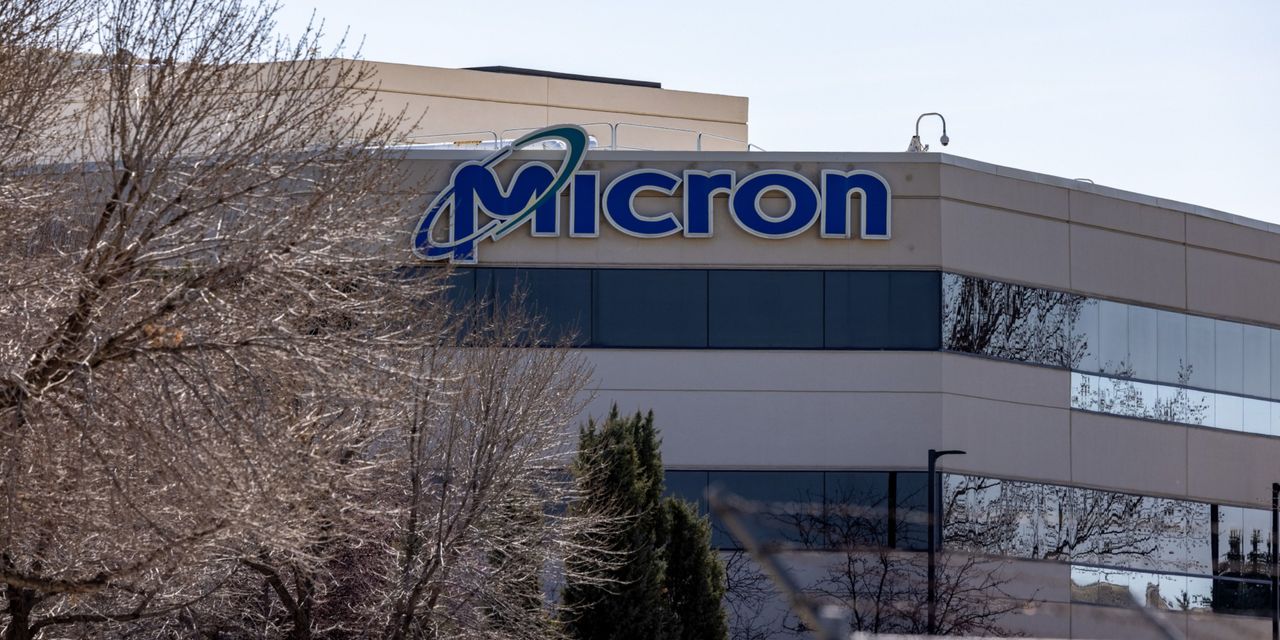Micron Technology Inc. added to Wall Street fears late Thursday that customers may have loaded up on chips during the shortage after the memory-chip maker forecast a poor outlook following earnings that topped expectations.
Micron
MU,
expects adjusted fourth-quarter net income of $1.43 to $1.83 a share on revenue of $6.8 billion to $7.6 billion. Analysts had forecast $2.60 a share on revenue of $9.15 billion.
“Recently, the industry demand environment has weakened, and we are taking action to moderate our supply growth in fiscal 2023,” said Sanjay Mehrotra, Micron’s chief executive, in a statement. “We are confident about the long-term secular demand for memory and storage and are well positioned to deliver strong cross-cycle financial performance.”
Micron shares, which had fallen as much as 5% after hours, were last down 1%, following a 1.3% decline in the regular session to close at $55.28.
For the fiscal third quarter, the Boise, Idaho-based chip maker reported net income of $2.63 billion, or $2.34 a share, compared with $1.74 billion, or $1.52 a share, in the year-ago period. Adjusted earnings, which exclude stock-based compensation expenses and other items, were $2.59 a share, compared with $1.88 a share in the year-ago period.
Revenue rose to $8.64 billion from $7.42 billion in the year-ago quarter.
Analysts surveyed by FactSet had forecast adjusted earnings of $2.43 a share on revenue of $8.64 billion, based on Micron’s forecast of $2.36 to $2.56 a share on revenue of $8.5 billion to $8.9 billion.
Read: Pessimism on chip stocks is hitting a new high, and the money seems to be flowing toward software
Micron specializes in DRAM and NAND memory chips. DRAM, or dynamic random access memory, is the type of memory commonly used in PCs and servers, while NAND chips are the flash memory chips used in smaller devices like smartphones and USB drives. Like most semiconductors, memory chips have been in great demand during the COVID-19 pandemic, and prices have shot higher, but analysts are beginning to seeing signs that demand is easing and customer inventories are building.
Over the past 12 months, Micron shares have dropped 35%, while the PHLX Semiconductor Index
SOX,
has shed 12%, the S&P 500 index
SPX,
has fallen 12%, and the tech-heavy Nasdaq Composite Index
COMP,
dropped 24%.



